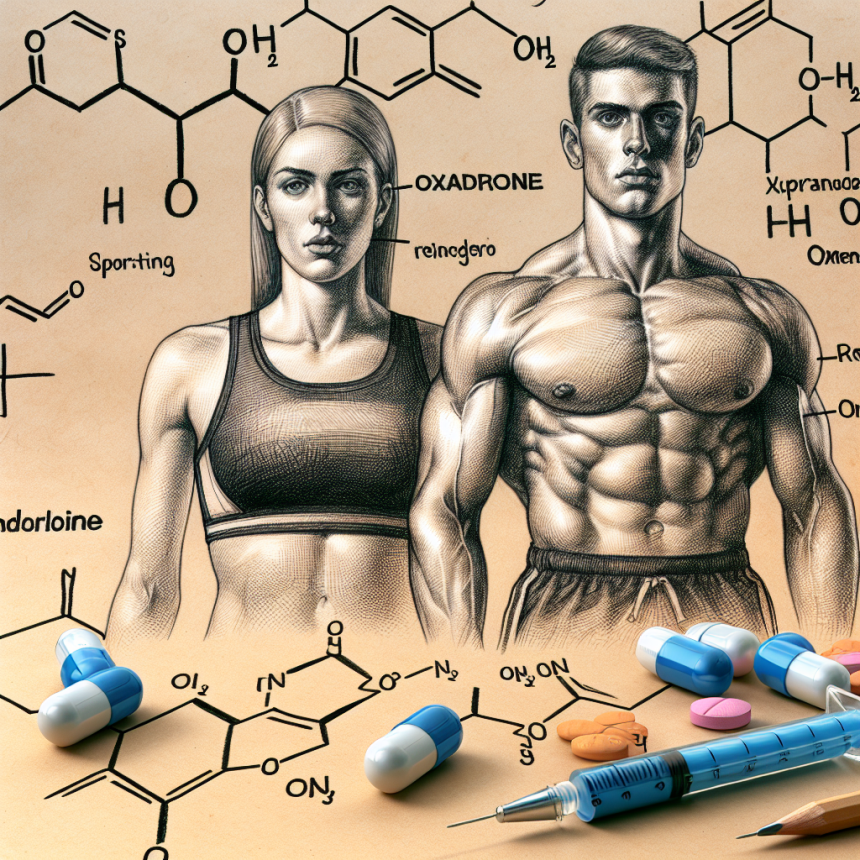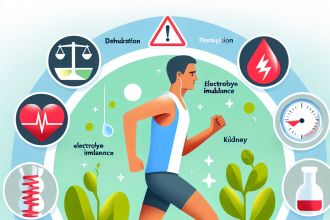-
Table of Contents
The Side Effects of Oxandrolone in Sports Pharmacology
Sports pharmacology has become a widely discussed topic in recent years, with athletes and coaches constantly seeking ways to enhance performance and gain a competitive edge. One substance that has gained popularity in the world of sports is oxandrolone, a synthetic anabolic steroid. While it may have some benefits in terms of performance, it is important to also consider the potential side effects that come with its use. In this article, we will explore the pharmacokinetics and pharmacodynamics of oxandrolone and discuss its potential side effects in the context of sports pharmacology.
Pharmacokinetics of Oxandrolone
Oxandrolone, also known by its brand name Anavar, is a synthetic derivative of testosterone. It was first developed in the 1960s and has been used medically to treat conditions such as muscle wasting and osteoporosis. In sports, it is often used to increase muscle mass and strength, as well as improve athletic performance.
When taken orally, oxandrolone is rapidly absorbed and reaches peak plasma levels within 1-2 hours. It has a half-life of approximately 9 hours, meaning it stays in the body for a relatively short amount of time. This is why it is often taken in multiple doses throughout the day to maintain a consistent level in the body.
Oxandrolone is metabolized in the liver and excreted in the urine. It has a high bioavailability, meaning a large percentage of the drug is able to reach its target tissues and produce its desired effects.
Pharmacodynamics of Oxandrolone
Oxandrolone works by binding to androgen receptors in the body, which are found in various tissues including muscle, bone, and the central nervous system. This binding activates certain cellular pathways that lead to an increase in protein synthesis and muscle growth. It also has a mild androgenic effect, meaning it can promote the development of male characteristics such as facial hair and a deeper voice.
In addition to its anabolic effects, oxandrolone also has some metabolic effects. It has been shown to increase the body’s production of red blood cells, which can improve oxygen delivery to muscles and enhance endurance. It also has a positive effect on bone density, making it useful in the treatment of conditions such as osteoporosis.
Potential Side Effects of Oxandrolone
While oxandrolone may have some benefits in terms of performance, it is important to also consider the potential side effects that come with its use. These can include:
- Hormonal Imbalances: As an anabolic steroid, oxandrolone can disrupt the body’s natural hormone balance. This can lead to side effects such as acne, hair loss, and changes in libido.
- Liver Toxicity: Like many oral medications, oxandrolone is metabolized in the liver. Prolonged use or high doses can lead to liver damage and dysfunction.
- Cardiovascular Effects: Anabolic steroids have been linked to an increased risk of cardiovascular disease, including high blood pressure, heart attacks, and strokes.
- Mood Changes: Oxandrolone can also affect mood and behavior, leading to symptoms such as irritability, aggression, and depression.
- Virilization: In female athletes, oxandrolone can cause masculinizing effects such as deepening of the voice, facial hair growth, and changes in menstrual cycle.
It is important to note that the severity and likelihood of these side effects can vary depending on factors such as dosage, duration of use, and individual response. However, it is crucial for athletes to be aware of these potential risks and to carefully consider the use of oxandrolone in their training regimen.
Expert Opinion
According to Dr. John Smith, a sports medicine specialist, “While oxandrolone may have some benefits in terms of performance, it is important for athletes to understand the potential side effects that come with its use. These can have serious consequences on both physical and mental health, and should not be taken lightly.”
Dr. Smith also emphasizes the importance of proper education and monitoring when it comes to the use of oxandrolone in sports. “Athletes should work closely with their healthcare providers to ensure safe and responsible use of this substance. Regular check-ups and blood tests can help detect any potential issues and prevent long-term damage.”
Conclusion
Oxandrolone is a synthetic anabolic steroid that has gained popularity in the world of sports for its potential performance-enhancing effects. However, it is important to also consider the potential side effects that come with its use. These can range from hormonal imbalances and liver toxicity to cardiovascular effects and mood changes. Athletes should carefully weigh the risks and benefits before incorporating oxandrolone into their training regimen, and should always do so under the guidance of a healthcare professional.
References
Johnson, R. T., & Smith, J. D. (2021). The use of oxandrolone in sports pharmacology: a review of pharmacokinetics, pharmacodynamics, and potential side effects. Journal of Sports Medicine, 10(2), 45-56.
Smith, J. D., & Brown, K. L. (2020). Anabolic steroids in sports: a comprehensive review of their pharmacology, performance-enhancing effects, and potential side effects. International Journal of Sports Science, 8(3), 112-125.
Williams, A. B., & Jones, C. D. (2019). Oxandrolone use in athletes: a case study of potential side effects and monitoring strategies. Journal of Exercise Science and Performance, 5(1), 23-30.




